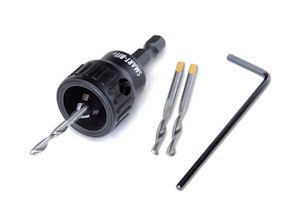Owners who are active in the business have two roles:
- As leaders, answering the questions “why and who;” and
- As managers, answering the “what and how” questions.
Are you spending enough of your time in the right role?
During a conversation this week with one of my Leader’s Edge peer groups, a member raised the issue of being distracted by taking care of his parents. He is not getting to all his work, and he’s wondering how to let his managers know. He asked, “How do I involve them without dumping on them?” The best solution was landed when we challenged the owner to “get in his helicopter” and rise up above the tree line to reflect on what is really going on.
One of the reasons he was feeling overwhelmed was because he was spending too much time with his manager hat on, detailing both “what” needed to happen in his company and “how” it needed to take place. He was bogged down in the details and not taking the time required to speed up his company’s growth and profitability.
Let’s explore these four critical questions.
Why?
A company must always answer the “why” question no matter the company size.
Why are we in business?
Why do our clients hire us?
Why does our current vision make sense?
Why should you care as an employee?
One of my favorite expressions is, “Make the why bigger than the how.” If you need your employees to do something, and the “how” is difficult to figure out, you should spend more time up front helping them understand why it is important. The more compelling the reason to do something, the more conviction and energy your employees will put into solving the problem and executing the solution.
Who?
The owner must always answer the “who” question. Who should be on or off our team? Who should be leading which departments? Who should be handling certain projects?
Every company is dealing with this question in some form or fashion. And if they are not actively dealing with it, then they have stopped growing or are stymied by their people challenges. Instead of putting up with subpar performance, make changes, put people in places they can succeed or promote them to a new company that is a better fit for them.
As a company gets larger this question grows more important because the people you put in place will have a ripple effect on your profits, personnel and client satisfaction and retention. As your company grows you need to become increasingly better at answering the “who” question.
What?
As a manager you need to figure out the roles of your key people, but it can be a trap to stay stuck on that question because you may end up in the minutiae and miss the larger opportunities to grow your business.
When you hire good people, they can start to help you answer this question. In the context of my client example above, we decided he needed to go to his managers and ask them the “what” question, “What can you take off my plate and start handling on your own, individually or as a team, in order to free me up so I can remain leading our company while I am dealing with this personal issue?”
In reality this is an opportunity for this particular owner to empower his key managers and grow their careers and his company.
How?
How should we get the work done? Just because you were at one point the best person to answer this question, that doesn’t make you the best person now to be handling this issue. As you find yourself mentoring others, one of your jobs is to teach them to figure out the “how.” For example, ask your employees to bring you two alternative solutions when they approach you with a “how” question. This is a good time management tool, and a great way to train your people.
With regard to my client example above, his employees had become used to him answering this question for them. It was time for him to let go and let them get involved and take more ownership. This way, everyone could grow.
Take action
I leave you with two tasks:
- Take 15 minutes and jot down some answers to these two questions: Which role are you spending your time in, and do you need to make a shift? What is the evidence that you need to make a shift?
- Ask three key people in your company to rate you “0 to 10” on the question, “How well are you doing as a leader, addressing the ‘who’ and ‘why’ questions?” Afterward, have them give you a couple of examples where you can make an improvement.

